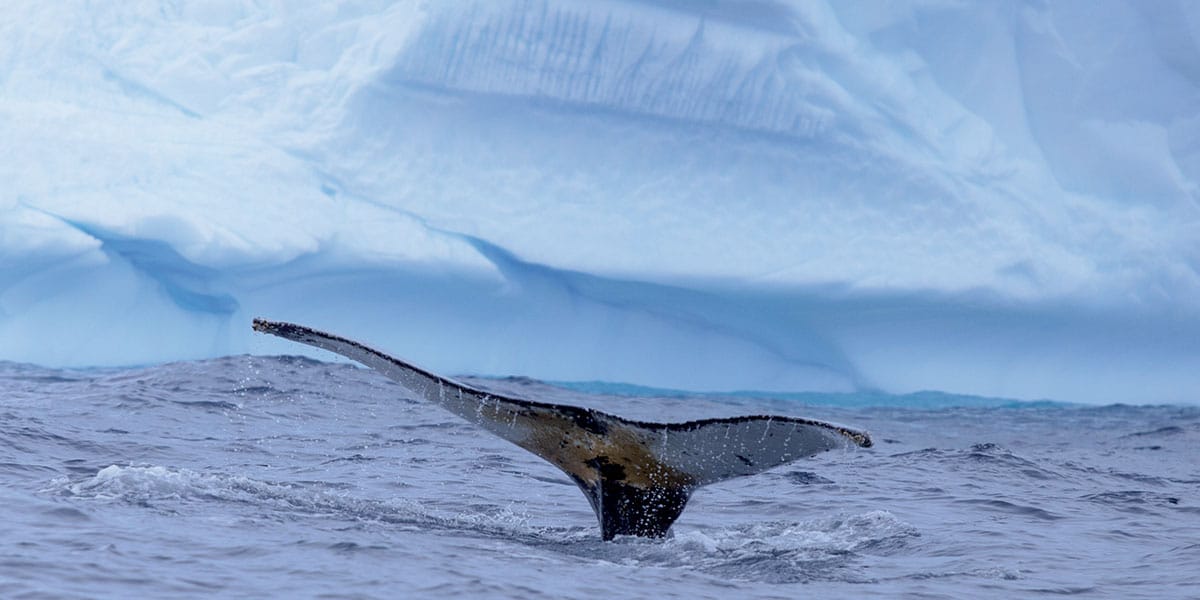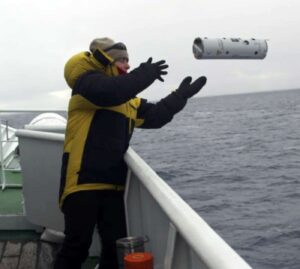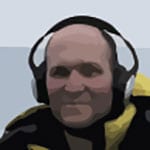


Brief description and intermediate results

During the 20th century, more than 2 million Antarctic whales were killed. The present-day status of many of these populations remains poorly known. Yet, precise information on post-exploitation recovery of these whales is critical for broader ecological conservation and management of the Antarctic marine environment. Many species of Antarctic whales make loud distinctive sounds, and within a species these sounds may vary with the geographic region in which they are recorded. Newly validated instrumentation and methods for listening to whales have resulted in the ability to detect and reliably locate sounds produced by some species, such as blue whales, over extreme distances.
During the ACE Voyage we conducted underwater listening stations in order to monitor for the sounds of these critically endangered Antarctic blue whales and endangered fin whales. While very few of these species were seen during the voyage, we detected more than 20,000 sounds that can be attributed to Antarctic blue whales and nearly 1000 sounds attributable to fin whales. While we cannot say for sure how many individual animals were producing these sounds, we were able to achieve our main objective: the production of a map of the locations of these distinctive low-frequency sounds.
Our next steps will involve comparing our new map of whale distribution to the historical maps of catch locations recorded during 20th century whaling and historical surveys. We will also investigate whether environmental factors such as sea-ice, temperature, depth, distance from shore can help to explain the distribution of these rare and remote ocean wanderers and aid in their conservation.

Brian Miller
Australian Antarctic Division, Australia
Circumpolar acoustic mapping of endangered Southern Ocean whales
- IWC-SORP Antarctic Blue Whale Project, PAMTech.eu (UK)
- University of Aberdeen (UK)
- University of Washington, Seattle (USA)
- Mammal Research Institute Whale Unit, University of Pretoria (South Africa)
- PELAGIS Observatory CNRS-UMS 3462, University of La Rochelle (France)
- NOAA Ocean Acoustics Program (USA)
- Centre for Research into Ecological and Environmental Modelling, University of St Andrews, Scotland (UK)
- Alfred-Wegener Institute for Polar and Marine Research, Bremerhaven (Germany)
- Curtin University Centre for Marine Science and Technology, Perth (Australia)
- Australian Marine Mammal Centre (Australia)